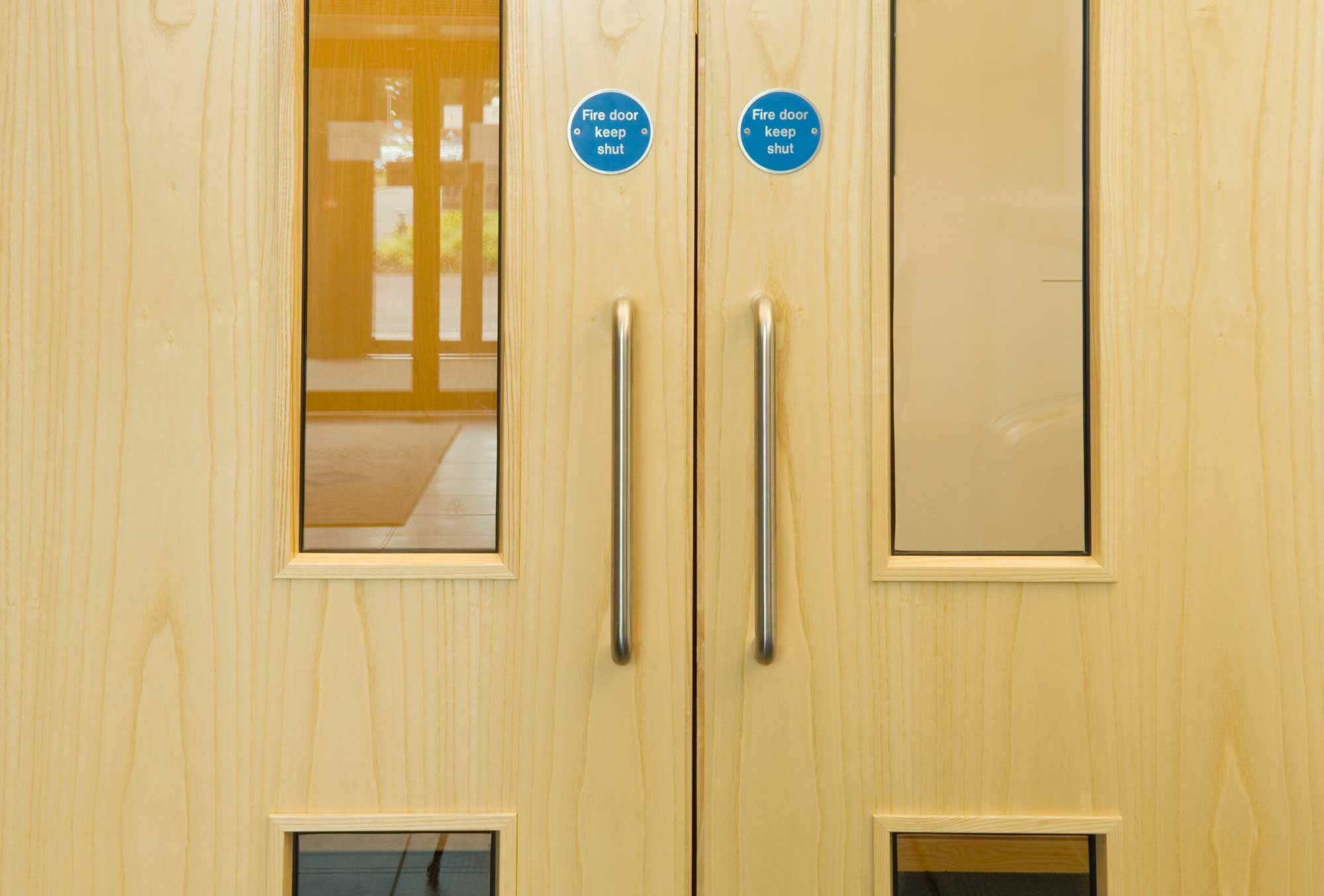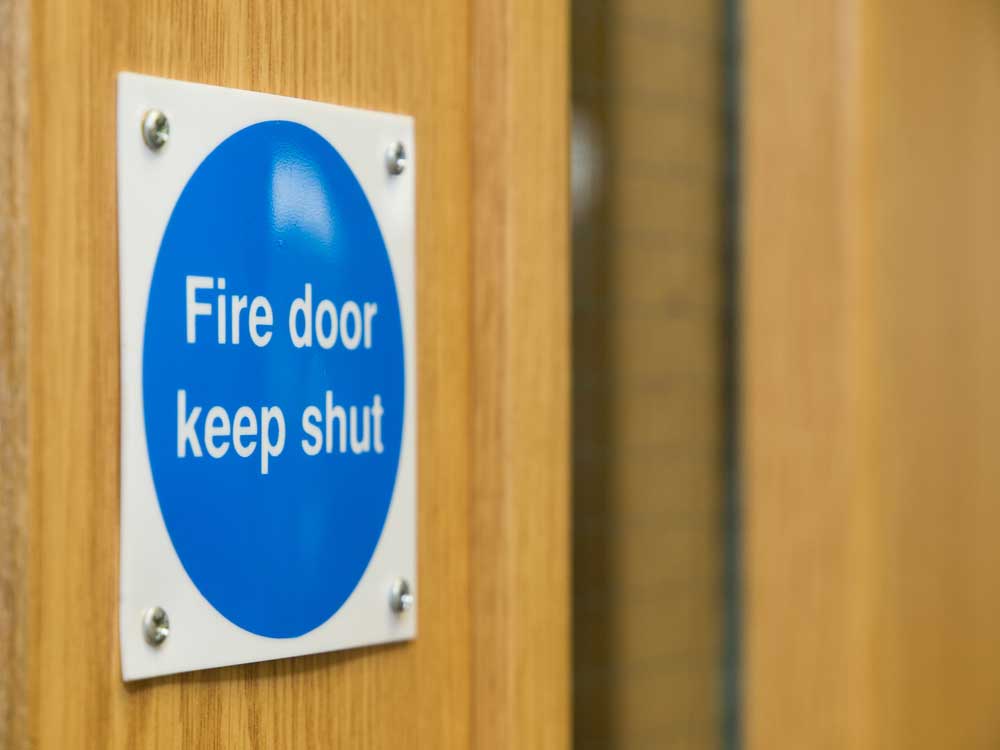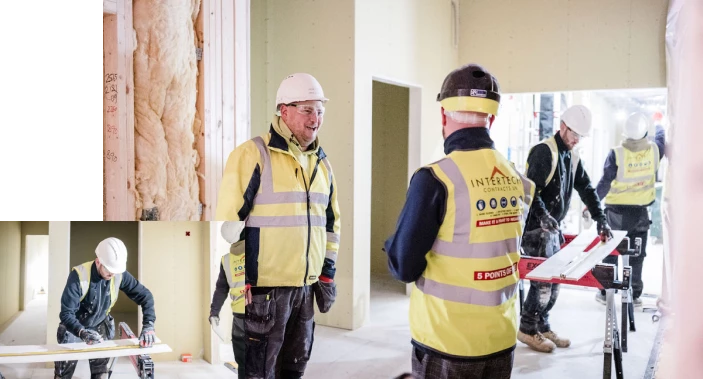
Fire doors are a vital part of a building's fire prevention system. This system protects both people and property, so every fire door should be installed by professionals and undergo regular checks.
Research by the London Fire Brigade and the Fire Door Inspection Scheme found that 31% of fire doors fail inspections due to improper installation. Poorly installed fire doors can have devastating consequences if a fire does occur. Therefore, it is crucial to find a trusted and qualified provider to install your fire doors.
What makes fire doors different to regular doors?
Fire doors are designed to prevent the spread of fire, giving people precious time to safely escape a building and reducing property damage. Depending on the make, fire doors can withstand a fire for varying times—most often 30 or 60 minutes. This will be clearly labelled on the door.
Professionally installed fire doors work by containing fire and smoke in the room where they originated. A number of adaptations allow fire doors to do this, including:
Fire doors are thicker than regular doors
They include a non-flammable core
The frame is made from a certified material
The gap between the frame and door is no more than 2-3mm
Gaps are fitted with intumescent seals, which expand when exposed to heat from a fire
Where are fire doors needed?
According to the Regulatory Reform (Fire Safety) Order: 2005 (RRO), fire door installation is legally required in all properties used for non-domestic purposes. This includes offices, schools, hospitals and much more.
The Regulatory Reform (Fire Safety) Order: 2005 (RRO) also states that some domestic properties require fire door installation. These include multiple-occupancy blocks of flats, flats 4.5m above ground level, student housing, or properties for rent.
Fire doors should be installed within a building where they can contain the spread of a fire and protect fire escape routes. For example, stairwells should have doors fitted as they are a primary escape route.
A thorough inspection of your property by a professional fire door installation provider will highlight where fire doors should be installed in your building.
Why do fire doors need to be checked regularly?
According to government guidance, fire doors must be checked regularly to ensure that they working properly. A general rule is to have your fire doors checked at least every six months. This will allow any wear-and-tear that may impact the functioning of the fire door to be detected and resolved early.
Fire door maintenance checks are crucial for safety and compliance, and you, the building owner, are responsible for ensuring these inspections happen.
According to British Standards and the Regulatory Reform (Fire Safety) Order 2005 (RRFSO), fire door inspections are required to meet the following UK regulations:
Duty to take general fire precautions.
Risk assessments are to be carried out.
Principles of prevention to be applied.
Fire safety arrangements are to be made.
Elimination or reduction of risks from dangerous substances must occur.
Fire-fighting and fire detection.
Emergency routes and exits.
Procedures for serious and imminent danger and danger areas.
What is involved in a fire door inspection?
Certified fire door installers can provide a complete service, including inspections. Fire door inspections involve checking the following:
Certification: Each fire door requires certification, verifiable by a label or plug on the top or side of the door.
Fully Closes: Fire doors equipped with self-closing mechanisms must close fully and smoothly without sticking to the floor, jamming on the latch or seal, or closing too forcefully. Verify this by fully opening and then closing the door, as well as slightly opening it about 5cm and allowing it to close.
Gaps: The gaps should measure between 2-3mm.
Frame: The door frames must be free from damage and securely attached to the wall.
Seals: Intumescent seals should be firmly in place within the groove, frame, or door leaf and must be continuous and undamaged around the door.
Hinges: A minimum of three hinges, securely installed with intact and appropriately sized screws, is required for fire doors.
Hold-Open Devices: Fire doors intended to remain open must use approved, safe, and legal hold-open devices that function properly and close the door when the fire alarm activates. Any wedges used to hold doors open should be removed.
Latch: Doors with latches should open smoothly with the handle, securely holding the door in place without rattling.
Wear-and-Tear: Inspect fire doors for any signs of wear and tear that could diminish their effectiveness. If the door includes a window, ensure the glass is intact without cracks.
Location: Fire doors must have the appropriate rating corresponding to their specific location.

Why should you choose Intertech contracts to be your professional fire door installation provider?
Intertech Contracts offers a complete Fire Door installation service, including a full inspection of your premises along with guidance and advice. We’ll put together a full report with recommendations and install approved fire doors. Our comprehensive service also offers an ongoing maintenance program to ensure fire door safety with inspections.
Our experienced and friendly team will provide you with honest and constructive advice throughout your project to ensure you are fully informed during the process and to make sure your fire doors always perform to an optimum level.
Intertech contracts have several accreditations, including the BM TRADA Q-Mark fire door installation scheme. So you can be sure you’re getting reliable fire protection.
If you need any advice or a quote, please do not hesitate to get in touch with our team today.

